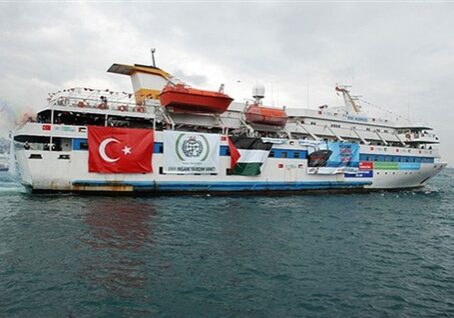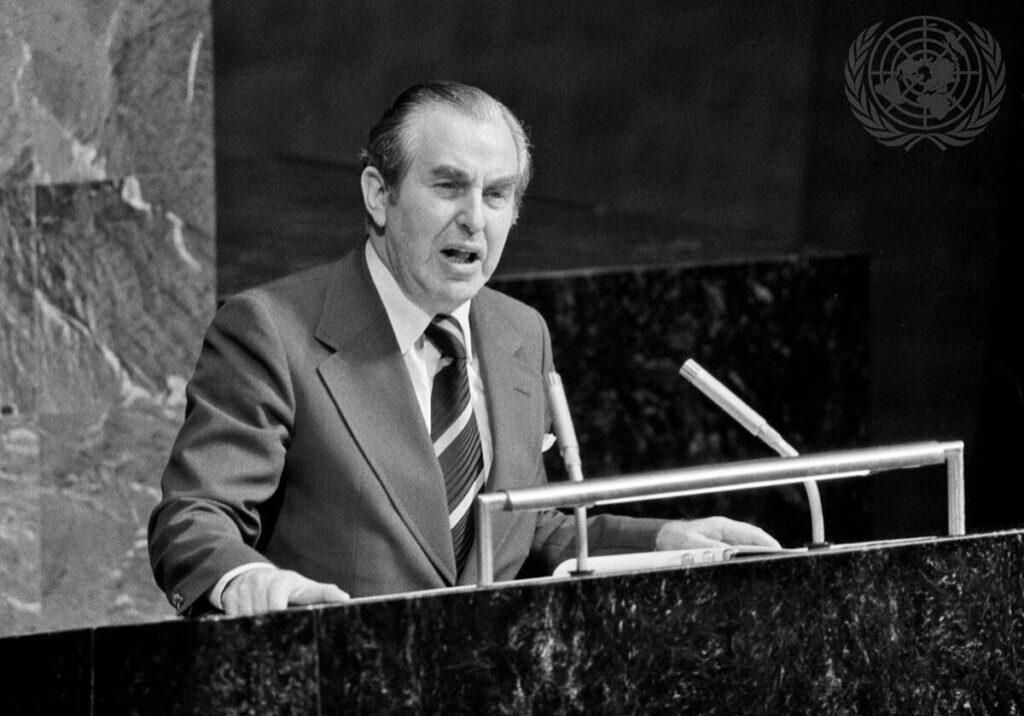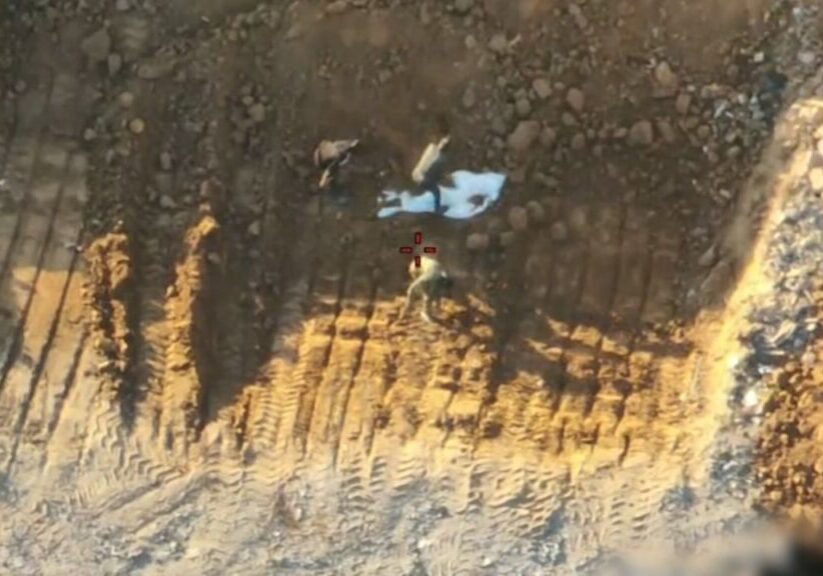Australia/Israel Review
Books: Misreading Account
Jan 3, 2005 | Daniel Mandel
Herzl’s Nightmare: One land, Two People
By Peter Rodgers
Scribe Publications, Melbourne, 2003, pp. 138
Years ago, when Peter Rodgers was Australia’s ambassador to Israel, I saw him address the Institute of International Affairs in Melbourne. This was the age of the peace process, when Yasser Arafat condemned terrorists applauded in his own media – often by himself – and Yitzhak Rabin and Shimon Peres declaimed that the massacres would not stop the peace process – which they eventually did. In short, a time of public naiveté, constantly jarred by calamities – not least Rabin’s assassination by a Jewish extremist.
Rodgers spoke with hope of Oslo and made a remarkably sympathetic but fair assessment of Israel’s case. But it is a very different Rodgers that produced this often caustic, long essay, now that Oslo exploded and has been buried these past few years.
Although unequivocally critical of Palestinian conduct, Rodgers’ conclusion is clear and characterised by a few, fervently argued judgements:
• Zionism has been historically short-sighted, even racist, in its dealings with the Palestinians;
• Zionism’s fulfillment inescapably involved suffering for Palestinians; and
• Both sides have behaved abhorrently and there is little to choose between them.
Put simply, Rodgers is enamoured with neither side but has come to the view that Israel is chiefly to blame for the conflict. But how well does he argue his claims?
Zionism has been historically short-sighted, even racist, in its dealings with the Palestinians.
Rodgers sees the Jewish claim as rooted in unsustainable myths and prejudices. We learn of the two sides on page 2, “one waving the Old Testament as proof of ownership, the other chiding, “But we belong here”’ — antique manuscripts juxtaposed with physical presence. This heralds Rodger’s approach throughout — Zionism as an atavism, shorn of the communitarian ideals and any pretense of co-operation with neighbouring Arabs that animated the movement.
Thus, as scores of essayists before him, Rodgers chides the Zionist movement for blindness to indigenous Arabs. Even Zionist founder Theodor Herzl’s imaginative vision of future Arab-Jewish co-operation in his novel Altneuland is dismissed rather ungenerously as “faultless fiction” (p. 10). The usual Golda Meir quote (“Who are the Palestinians? I am a Palestinian”) is derided by Rodgers (“an imaginative claim … for someone born in Russia”) when in fact the word ‘Palestinian’ had scarcely been adopted by Arabs when she spoke and had been formerly used almost exclusively by Jews under the Mandate.
When it comes to earlier compromise solutions, Zionism does not get off easy in Rodgers’ account. Yet even he notes the Zionists accepted the Peel partition “grudgingly” (p. 21) but that it was the Chamberlain government that “began to unpick the notion” (p. 21). In contrast, the Arab parties rejecting partition at various times receive a light rap on the knuckles, for here, Rodgers prefers to see the conflict as somehow mechanistic and inevitable, rather than the product of the decisions of living men.
Thus, for Rodgers, the salient feature of the first Arab-Israeli war is not that Arab states ignored an international settlement whose implementation would have meant a 56-year-old Palestinian state today, but that Arab refugees were created. The Rodgers version — not a new one by any means, but uncritically adopted by him — is that the Arab refugees were created less by the war itself than almost exclusively by Israeli action, and not through military necessity, but as a result of a racist, Zionist desire of long-standing to expel the Arab population. As he puts it, “The issue of transfer goes right to heart of the identity of the Jewish state” (p. 89).
It is here that Rodgers’ slipshod use of sources is most apparent. With gusto, ‘new historian’ Benny Morris’ account, The Birth of the Palestinian Refugee Problem, is rolled out, with its purported quote from Ben Gurion: “we must expel the Arabs and take their places… and if we have to use force… we have force at our disposal.” (p. 19). But as historian Efraim Karsh has demonstrated, this is a flagrant misquote, a complete inversion of Ben Gurion’s words, which argued against expulsion.
Rodgers lists Karsh’s work in his select bibliography, but he appears not to have read it carefully. Nor does he seem to have assimilated even Morris’ own account, The Birth of the Palestinian Refugee Problem. The complexity of factors that produced the refugee problem were such that Morris concluded his book with the finding that it was “born of war, not design, Jewish or Arab.” In contrast, the Rodgers version has the Palestinian refugee problem reduced to merely two factors: anticipatory flight and flight at gunpoint. No Arab inducement to flight; no Arab atrocity propaganda; no early departure of the Arab leadership, leaving the peasantry directionless; no Arab refusal to remain in places like Haifa and Tiberias, despite repeated Jewish and British urging, obtain even a mention in the Rodgers version.
Moreover, the idea of ‘transfer’ as a long-standing Zionist policy turns out to have been a Morris mirage. Morris, who once answered Karsh’s critique with lofty disdain (“It does not deserve serious attention or reply”) has since made some oblique concessions to Karsh’s demonstration, in which he discloses that his “treatment of transfer thinking before 1948 was, indeed, superficial.”
Rodgers scoffs at the notion he attributes to a latter-day Morris that the Palestinians’ expulsion was brought about for a noble cause, but this is to misunderstand Morris’ discussion of ethnic cleansing. The expulsion, to the extent it was an expulsion, emerged from a war initiated by those who intended to annihilate Israel. The expulsions, Morris is arguing, fall in the context of resisting that design. It remains the case that preserving one’s own existence is not a crime. Yet Rodgers, fully aware of the present existence of Australia founded upon Aboriginal dispossession necessitated by no such paramount imperative, seems unwilling to accord Israel that luxury.
Rodgers’ presentation becomes no more equitable as time progresses to the present. Israeli settlement in the West Bank and Gaza is uniformly damned, Sharon’s planned disengagement from Gaza, regardless of current conditions, is simply “long overdue and woefully inadequate” and the idea that Israeli settlement activity is not illegal is simply “sophistry” (p. 42). The oversimplification of Morris’ sometimes flawed evidence, the reliance on an imaginary Zionist policy of ‘transfer’ and the inclination to dismiss Israeli claims argues a strong partisanship and a reluctance to examine the evidence for himself.
Zionism’s fulfillment inescapably involved suffering for Palestinians.
Rodgers opens his book affirming that, “Zionism, it is true, did not mean the forced dispossession of Palestinian Arabs” (p. 6). But this view, as we have seen, soon gives way to the ‘transfer’ bugbear.
Rodgers refers to the alarm, hostility, occasional violence and indifference with which Arabs responded at different times to the Zionist enterprise. Yet he derides the Zionist attitude of regarding Palestinian hostility as reactive, something less than “organic” (p. 13), as a failing. Here, any one of the several works dealing with the watershed events of 1929 — none of which he seems to have consulted, would have set him right.
In that year a nation-wide pogrom was conducted against often-defenceless Jews across Palestine. Previous attacks in 1920 and 1921 had been contrived affairs (though no less deadly for that) that failed to ignite an Arab population, least of all those trading and living in close proximity with the Zionists. But British authorities had fatefully reacted by temporarily suspending Jewish immigration. The idea that Jewish immigration depended on tranquility on the part of mob-rousers implanted the fateful idea that violence could undo the British commitment to a Jewish national home in Palestine. In short, it was an invitation to instigate violence. In 1929 this occurred, with preparatory weeks of Arab reports of imaginary Jewish attacks on the Jerusalem mosques, even massacres of Muslims, a time-honoured method to rouse masses to murder and rapine. The Palestinian leader, Haj Amin el Husseini, who orchestrated the violence, succeeded in establishing the conflict on a religious footing it has never lost.
Rodgers seems to understand none of this, none of the engineering of bloodshed to wreak irrevocable damage to group relations, a manoeuvre wholly worthy of the emergent totalitarian era that inspired it. Like many a modern textbook summary, he refers blithely to “anti-Jewish riots in 1920, 1921, and 1929” (p. 19) which tell one nothing of who was attacking and who was defending.
Rodgers’ mechanistic view of Zionism has a way of exculpating Arabs and incriminating Jews. “The state to which Herzl claimed paternity…came at a terrible cost,” (p. 15) says Rodgers, as though statehood itself, not opposition to it, produced the harvest of warfare and refugees. Or, “No matter how much the early Zionists wished it to be true, Palestine was never a land without a people. The making of one nationalist dream unmade another” (p. 80). Or again, Israel is “unable to resolve the contradiction of its creation: that self-determination for one people trampled on self-determination for another” (p. 116). Rodgers never tells his readers why this need have been true. He simply does not understand how the conflict developed and, still more important, why it persists today.
Both sides have behaved abhorrently and there is little to choose between them.
From early in his book, Rodgers condemns both Israelis and Palestinians for the “lies and hypocrisies, myth-making and mutual demonisation; of a determined, energetic refusal to contemplate what it must be to be the other…All they see is their own pain” (p. 3). Later, “Settlements killed Palestinian hopes and, in turn, Palestinians killed Israelis” (p. 52). Or again, during the 1990s, “Israelis and Palestinians killed the other and they killed their own” (p. 73).
However, this even-handed detestation of both sides’ behaviour proves inconsistent. Thus, Rodgers dismisses Ehud Barak’s purportedly “generous offer” and denigrates as an “article of faith” that Arafat’s “obduracy” (p. 63) sank the Oslo peace process that once so engaged him. At one point, he even appears to accept the testimony of Hamas’s Ismail Abu Shanab that suicide bombing in Israel started only as a response to the 1994 Hebron massacre by an Israeli, a claim easily disproved by any detailed database of terrorist incidents during the Oslo period.
Whatever the evils of violence, Rodgers finds pause to make at least a partial exculpation for Palestinians. “Palestinian violence,” he observes, “has kept the Palestinian issue on the world stage” (p. 77). Palestinian acceptance of partition in 1947 would have meant a state and no need for any violence to keep the prospect of one on the world stage for decades. Yet Rodgers is lenient on the Palestinian refusal, regarding criticism of it as a case of “perfect hindsight” (p. 104). As for the Palestinian leadership’s active collaboration with Nazi Germany, Rodgers provides no details and indeed dismisses it as mere “flirtations” (p. 27).
Readers of this book will walk away thinking Israel has sown the wind and thus reaped the whirlwind. Its tone, simultaneously earnest and hard-hearted, suggests an informed outsider who has been looking to validate rather than test his recent feelings on the question. He has despaired of Zionism and has looked far and wide to justify his choice. This is not just a case of Oslo blues. Oscar Wilde remarked on learning of the name of the prosecutor in his trial, “No doubt he will pursue his case with the added bitterness of an old friend.” Rodgers has done much the same here. It is a case of disaffection, with all the mean-spiritedness and antagonism this implies.
Few books concerned with Israel have issued from Australia. It is a pity this one does not usefully add to their number.
Daniel Mandel is associate director of the Middle East Forum and author of H.V. Evatt and the Establishment of Israel: The Undercover Zionist (Routledge, London, 2004).
Tags: Israel






